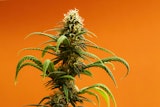
For an indoor grow facility, lighting is integral to the life of a cannabis plant, providing the necessary energy for photosynthesis and influencing various growth stages.
In contemporary cannabis cultivation, IoT devices have revolutionized how we understand and harness light, ensuring plants receive the right amount and quality of light throughout their life cycle.
Why Monitor Lighting?
- The Importance of Lighting in Plant Growth: Light drives photosynthesis, the process by which plants convert light energy into chemical energy. For cannabis, lighting affects not only growth but also potency, flavor and yield.
- Effects of Improper Lighting: Inadequate or excessive lighting can stress the plant, leading to issues like bleaching, stunted growth, or reduced potency. Furthermore, the wrong light spectrum can disrupt the plant's photoperiod, potentially affecting flowering.
What Are We Monitoring?
- Light Intensity: Measures the amount of light that the plant receives.
- Example Value: 600 μmol/m^2/s (micromoles of photons per square meter per second) or Photosynthetic Photon Flux Density (PPFD).
- Light Spectrum: Represents the different wavelengths of light which plants use differently.
- Example Value: Blue light (400-500nm) during vegetative growth.
- How This Telemetry is Represented: Lighting data can be illustrated using line graphs for intensity over time and spectrum graphs to display the proportion of different light wavelengths.
 Modern telemetry tools translate raw lighting data into visual narratives of light, insightful visual stories, showcasing patterns, changes and anomalies.Shawn Deggans
Modern telemetry tools translate raw lighting data into visual narratives of light, insightful visual stories, showcasing patterns, changes and anomalies.Shawn Deggans
Devices for Monitoring Lighting
- Quantum Sensors: Measure the photosynthetically active radiation (PAR) that plants use. They provide insights into light intensity and are crucial for indoor growers.
- Spectrometers: Analyze the light spectrum, helping growers understand the quality of light their plants are receiving.
- IoT-Integrated LED Lights: Modern LED systems that can not only adjust light intensity and spectrum based on plant needs but also provide real-time data on their performance.
Interpreting Data
- Understanding the Ideal Range: Cannabis typically thrives under a PAR value within the range of 400-700 μmol/m^2/s, but the specific optimal value can vary depending on the growth stage and other factors.
- Recognizing Outliers: A sudden drop in light intensity or a shift in the spectrum can indicate a malfunctioning light system or external factors affecting light quality.
Testing and Calibration
- The Importance of Accuracy: As lighting directly affects photosynthesis, ensuring accurate light readings is essential to optimize growth.
- Testing Procedures: Regularly compare readings from your devices with lab-grade instruments or reference lights to ensure accuracy.
- Calibration Steps: Follow manufacturer guidelines to calibrate sensors, ensuring they reflect true light conditions.
- A Note on Control Systems: Most control systems offer ways to manage and time lighting. However, unless you've calibrated your lights with a scientific instrument, you may not always get the expected light based on the control system's readings. Ensure your control system provides some means of detecting the light, or work with your control system provider to properly calibrate your lighting.
Using Data for Cultivation Decisions
- Adjusting Light Cycles and Intensity: Based on the plant's growth stage and the data gathered, light cycles and intensity might need adjustments.
- Incorporating Other Data: Lighting data should be analyzed in conjunction with other factors like temperature and humidity, as they interact in influencing plant growth.
- Long-term Planning: Continuous monitoring can guide decisions on when to replace light systems or how to design lighting for new cultivation areas.
Monitoring lighting is more than just a technical endeavor; it melds science with the grower's expertise. In the world of cannabis cultivation, where quality and yield can significantly influence success, precise and timely data on lighting can make all the difference. With the integration of IoT devices, growers are now equipped with the tools to make informed decisions, ensuring their plants thrive and produce the best possible yield and quality.
This article is part five of an exclusive new series that will guide you through the essence of each of the fourteen pillars of plant care, focusing on indoor growth and revealing the nuances of how IoT can be a game-changer for cultivators.
Shawn Deggans owns Green Nanny, an IoT, AI and data consulting company focused on helping growers spend more time in the garden and less time struggling with technology.























